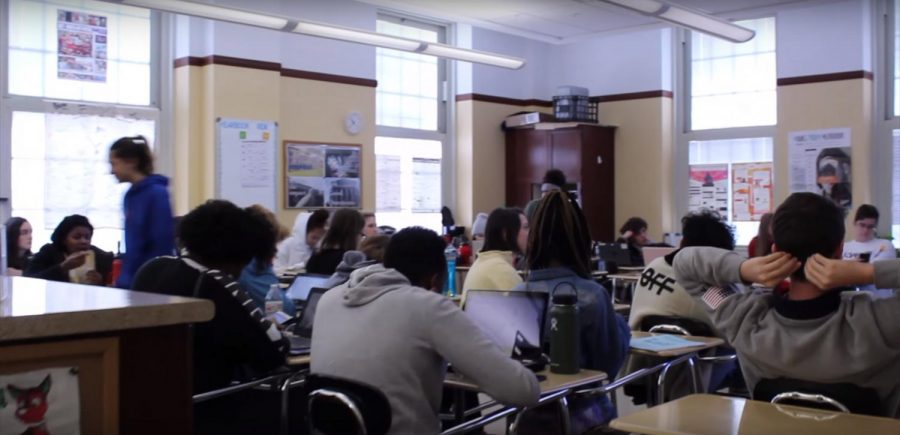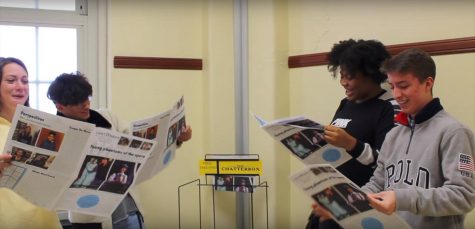Natl. Scholastic Journalism Week 2019 Day 2 – #RealNews
Since 1922, the staff of The Chatterbox has been dedicated to reporting #RealNews. Now, as many in Washington D.C. and around the country escalate a war against the First Ammendment, it is important to remember the pillars of journalism and the weight of our work.
When you tweet those two words, “fake news,” you are launching an unfounded attack on one of the strongest pillars of democracy: the free press.
For the information you label as such is far from it. Fact checks on speeches are not “fake news.” They seek to keep the public informed and the power of the government in check. NBC reports that reflect the President’s actions are not “fake news.” They are accurate portrayals of the current state of the union. And when the media doesn’t report exactly what you want it to, that is not “fake news.” The news is simply pursuing their objective of “seeking the truth and reporting it,” independently.
As Smithsonian Magazine describes it, politicians “dismiss good-faith reporting that they disagree with,” and call it “fake news.”
Although fake news is a thing to watch out for, it is hardly what many may think it is. A 2018 Washington Post article defines fake news as content that is “deliberately misleading or masquerading as authentic reporting.” Stories of this nature are often published by little known sources, are old, or sometimes are satirical or biased.
They include things such as the writings of Christopher Blair. Dubbed the “godfather of fake news” by BBC, he writes stories “unconnected to reality, he needs no research, and no notes.” This is so far off from the journalistic processes, it seems unreal. It is unreal.
Blair’s writing “is satire, meant to expose what he views as the bigotry and hypocrisy of those willing to accept his inflammatory fictions as truth,” according to a 2018 Boston Globe article. With the help of social media, pieces such as these are disseminated, reaching hundreds of thousands of people, many of which will consume them as real.
Sometimes, in this world, it is hard to tell what is real and what is not. But people can take steps to identify fake news, including you.
Consider the source. Is it The New York Times or is it someone like Christopher Blair? The more credible and transparent the source, the more likely the news will be real.
Read beyond the headline and read more on the subject. Is the headline sensational and misleading or does it accurately represent the information in the article? Is there just one article on it or are there thousands? The more rational headlines and support from mainstream sources an article has, the more likely it is to be true.
And, check your biases. Does this feed into a narrative that you desperately want to believe? If so, try reading about the issue from a different source and gain a new perspective. Everyone has a bias, even if they don’t know it. Even if you don’t mean to lean a certain way, you can never be perfectly center on many issues. By exposing yourself to as many angles as possible, you can see the story for what it really is, instead of seeing it through tinted glasses of bias.
Because of this, The Chatterbox is rededicating itself in the reporting of #RealNews. As journalists, will continue to seek the truth and report it. We will fact check each source at least three times. We will remain transparent and truthful. And we will uphold the freedom of the press that we are guaranteed in the Constitution itself.
Although fake news does exist, please remember, the truth trumps all. This is why we, The Chatterbox, stand in support of the reporting of #RealNews.
Your donation will support the student journalists of Walnut Hills High School. Your contribution will allow us to purchase equipment, cover our annual website hosting, printing costs and offset competition and conferences fees for students.







